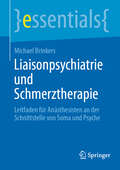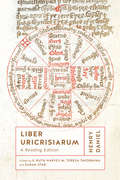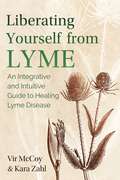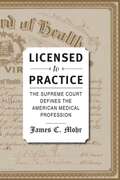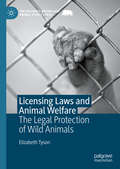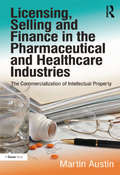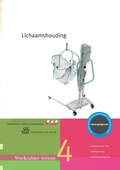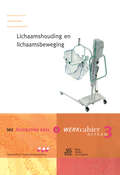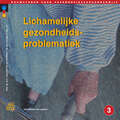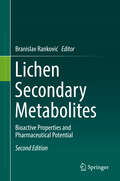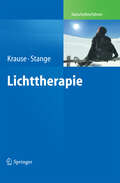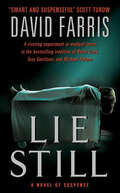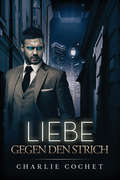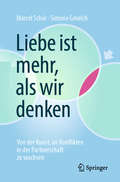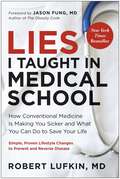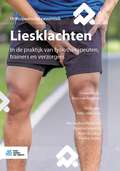- Table View
- List View
Liaisonpsychiatrie und Schmerztherapie: Leitfaden für Anästhesisten an der Schnittstelle von Soma und Psyche (essentials)
by Michael BrinkersIn diesem Buch geht es um den besonderen Blickwinkel, den ein Liaisonpsychiater hat, der gleichzeitig Schmerztherapeut ist: Er betrachtet alle Patientinnen und Patienten von somatischer und gleichzeitig psychischer Seite. Er deckt auf diese Weise die psychischen Komponenten der körperlichen Symptome auf, die Patienten und Patientinnen vorrangig aufweisen, und kann psychische Erkrankungen diagnostizieren, die zu deren Entstehung, Verschlimmerung oder Verlängerung beitragen können. Das Buch stellt ein Plädoyer für den dauerhaften regulären Einsatz psychiatrischer Expertise in der Schmerztherapie dar. Es wendet sich an Anästhesisten und andere Angehörige in Schmerzambulanzen tätiger medizinischer Berufsgruppen. Es bietet einen Leitfaden, um an der Schnittstelle zwischen Soma und Psyche den besten Behandlungsweg für Patientinnen und Patienten in der Schmerztherapie einzuschlagen. Der Inhalt Konsile und ihre Probleme Interdisziplinarität Das dritte Soma Somatoforme Störungen Medikamentöse Therapie Die Zielgruppen Anästhesisten Schmerztherapeuten
Liber Uricrisiarum: A Reading Edition
by Henry DanielHenry Daniel’s Liber Uricrisiarum is the earliest known work of academic medicine written in Middle English, presented here for the first time in a complete edition. Working in the late 1370s, Daniel combined authoritative medicine from written sources with his own personal experience, creating a text that stands out for its linguistic originality, intellectual scope, and wide circulation. Extant in over three dozen manuscript witnesses and two early modern print copies, Liber Uricrisiarum describes medieval humoral theory, anatomy, physiology, disease, medical astronomy, reproductive processes, and more, all within the broader context of uroscopic diagnosis. The introduction situates the text and its author in their medical, intellectual, linguistic, and bibliographic contexts, outlining the uroscopic tradition to which Daniel contributes, and describing the relationships among the many manuscripts containing the Liber Uricrisiarum. This edition presents the Middle English text, with a general glossary, glossary of proper names, and explanatory notes that explain obscure words and phrases and identify Daniel’s sources. It also includes the complete set of diagrams contained in the Royal manuscript; appendices providing the Latin and English versions of the prologue and epilogue; an extensive translation from one of Daniel’s important sources, Isaac Israeli’s De urinis; tables relevant to Daniel’s astronomical measurements; and an analysis of the Royal manuscript’s dialect. Cumulatively, the edition and apparatus introduce readers to an important yet understudied text, the details of which will have significant impact on studies of medieval medicine and science, intellectual history, and Middle English language and literature.
Liberale Eugenik?: Kritik der selektiven Reproduktion
by Robert RanischAnwendungen der Gendiagnostik und Reproduktionsmedizin erlauben es Wunscheltern, immer weiter auf das Erbgut ihrer Nachkommen Einfluss zu nehmen. Eine solche „liberale Eugenik“ wird mittlerweile auch in der Philosophie und Bioethik befürwortet. Wo liegen aber die Ursprünge eines solchen Denkens und wie ist eine umfassende Fortpflanzungsfreiheit zu bewerten? Ausgehend von einer freiheitlichen Ethik leistet die Studie eine immanente Kritik an der liberalen Eugenik und entwirft dabei eine eigene Position zum Umgang mit neuen gentechnischen Möglichkeiten.
Liberating Medicine, 1720–1835 (The Enlightenment World #10)
by Steve ClarkDuring the 18th century medicine became an autonomous discipline and practice. Surgeons justified themselves as skilled practitioners and set themselves apart from the unspecialized, hack barber-surgeons of early modernity. This title presents 17 essays on the relationship between medicine and literature during the Enlightenment.
Liberating Yourself from Lyme: An Integrative and Intuitive Guide to Healing Lyme Disease
by Vir McCoy Kara ZahlLearn to understand what your body is telling you and discover the optimum treatment path for your unique Lyme symptoms • Shares the authors&’ 10-year journeys to overcome chronic Lyme and details their successful healing protocol • Reveals how to increase your sensitivity to what your body is telling you to discover remedies and healing actions for your individual symptoms • Explores the antibiotics, herbs, diet, exercise, beliefs, immune health, and self-healing meditations that the authors used for a complete healing For some people, recovering from a Lyme disease infection can become an endless battle with physical, mental, and neurological symptoms, especially if it&’s not diagnosed early. After they both contracted Lyme in 2001, Vir McCoy and Kara Zahl embarked on standard antibiotic protocols. Soon they both began to have intuitive or sensory impressions about specific remedies their bodies needed, the nature of the disease, and why they were chronically ill. Backing up their intuitive impressions with scientific evidence, they developed a protocol that brought them each a full recovery after nearly 10 years battling chronic Lyme. In this medical intuitive approach to Lyme, the authors share their personal Lyme journeys and their integrative healing protocol that bridges the scientific and the spiritual. They explore the peculiarities of Lyme disease, including how Lyme is often misdiagnosed, giving it time to establish itself deep within the body&’s organs and nervous system, and examine in detail new and standard remedies, with thorough scientific references. They share the spiritual/psychological strategies they successfully employed against Lyme and its coinfections and explain how to increase your sensitivity to what your body is telling you to discover natural remedies and healing actions unique to your individual symptoms. Outlining a program of herbs, diet, and exercise that can work in tandem with traditional Lyme treatments, they also explore how to help the body get rid of this pathogen that possesses an incredible ability to adapt to various treatments and thwart their effectiveness. Expanding beyond Lyme, the authors offer self-help meditations to help you heal on a deeper level and explain how to access the &“holographic medicine chest&” to draw on for stronger immunity, energetic healing, and support at any time.
Liberating the Corporate Soul: Building A Visionary Organization
by Richard BarrettThe two most critical issues for business today, according to CEO's Barrett has worked with, are: "How to tap the deepest levels of creativity and the highest levels of productivity of our employees." In a world where competition has become global, successful companies are learning to build competitive advantage through their human capital. In the 21st Century, even that will not be enough. Success will also hinge on whether, in the eyes of the employees and society-at-large, the organization is a trusted member of the community and a good global citizen. Developing a values-driven approach to business is quickly becoming essential for financial success. Who you are and what you stand for are becoming just as important as what you sell. "More than simply a majestic vision, Richard Barrett's book brilliantly describes the ways and means for business leaders to create the compassionate and viable future we urgently need on our beautiful planet."-Godric E.S. Bader, F.R.S.A., Life President, Scott Bader Commonwealth Ltd."If every corporate executive bought this book and assigned it for in-house management development courses, the world would become a better place."-Hazel Henderson, author, Building a Win-Win World and Creating Alternative Futures"As we approach the new Millennium the world seeks clear thinkers with visionary concepts to help unravel the challenges before us. Richard Barrett's inspiring new book Liberating the Corporate Soul weaves a rich tapestry balancing heart and soul with a practical down-to-earth corporate vision for the future." -Craig and Patricia Neal, Co-Founders, Heartland Institute "Liberating the Corporate Soul presents a convincing rationale for making ethical and socially responsible behavior the best foundation for building and maintaining a high performance, globally successful business."-Robert W. MacGregor, President, Minnesota Center for Corporate Responsibility"Liberating the Corporate Soul gives a powerful set of tools for organizational transformation. I highly recommend it."-Ann Svendsen, Consultant and author of The Stakeholder Strategy: Profiting from Collaborative Business Relationships"Practical advice to tap the source of creativity and innovation which every business seeks."-Ron Nahser, President and CEO of The Nahser Agency/Advertising, Chicago"The bold, practical blueprint we need for moving business to the next evolutionary level. Sweeping, brilliant a sense of the grandeur of the new paradigm of business."-Martin Rutte, President Livelihood, co-author Chicken Soup for the Soul at Work "Liberating the Corporate Soul is a must read for leaders who want to shape a government built on values, innovation, and greater efficiency."-Jody Zall Kusek, Director of Strategic Planning and Performance Management, U.S. Department of the Interior "Liberating the Corporate Soul achieves the impossible: it integrates the intangibles of ethics, vision, and consciousness into a tangible measurement system."-Marcello Palazzi, Bsc, Msc, MBA, Co-Founder and Chair, Progressio Foundation, The Netherlands"Liberating the Corporate Soul provides a paradigm shifting look at how business leaders can harness the creative potential of their staff and their organizations. The author concisely develops and explains several tools that will enable managers to create an organizational foundation that will foster alignment, accountability and strategic focus."-Tad McKeon, MBA, CPA, CQM, 1997 Senior Examiner, Malcolm Baldrige National Quality Award, co-author, Transforming Home Care: Quality, Cost and Data Management"This book has captured the true
Liberation by Oppression: A Comparative Study of Slavery and Psychiatry
by Thomas SzaszOriginally called mad-doctoring, psychiatry began in the seventeenth century with the establishing of madhouses and the legal empowering of doctors to incarcerate persons denominated as insane. Until the end of the nineteenth century, every relationship between psychiatrist and patient was based on domination and coercion, as between master and slave. Psychiatry, its emblem the state mental hospital, was a part of the public sphere, the sphere of coercion.The advent of private psychotherapy, at the end of the nineteenth century, split psychiatry in two: some patients continued to be the involuntary inmates of state hospitals; others became the voluntary patients of privately practicing psychotherapists. Psychotherapy was officially defined as a type of medical treatment, but actually was a secular-medical version of the cure of souls. Relationships between therapist and patient, Thomas Szasz argues, was based on cooperation and contract, as is relationships between employer and employee, or, between clergyman and parishioner. Psychotherapy, its emblem the therapist's office, was a part of the private sphere, the contract.Through most of the twentieth century, psychiatry was a house divided-half-slave, and half-free. During the past few decades, psychiatry became united again: all relations between psychiatrists and patients, regardless of the nature of the interaction between them, are now based on actual or potential coercion. This situation is the result of two major ""reforms"" that deprive therapist and patient alike of the freedom to contract with one another: Therapists now have a double duty: they must protect all mental patients-involuntary and voluntary, hospitalized or outpatient, incompetent or competent-from themselves. They must also protect the public from all patients.Persons designated as mental patients may be exempted from responsibility for the deleterious consequences of their own behavior if it is attributed to mental illne
Licensed to Practice: The Supreme Court Defines the American Medical Profession
by James C. MohrHow did American doctors come to be licensed on the terms we now take for granted?Licensed to Practice begins with an 1891 shooting in Wheeling, West Virginia, that left one doctor dead and another on trial for his life. Formerly close friends, the doctors had fallen out over the issue of medical licensing. Historian James C. Mohr calls the murder "a sorry personal consequence of the far larger and historically significant battle among West Virginia’s physicians over the future of their profession."Through most of the nineteenth century, anyone could call themselves a doctor and could practice medicine on whatever basis they wished. But an 1889 U.S. Supreme Court case, Dent v. West Virginia, effectively transformed medical practice from an unregulated occupation to a legally recognized profession. The political and legal battles that led up to the decision were unusually bitter—especially among physicians themselves—and the outcome was far from a foregone conclusion.So-called Regular physicians wanted to impose their own standards on the wide-open medical marketplace in which they and such non-Regulars as Thomsonians, Botanics, Hydropaths, Homeopaths, and Eclectics competed. The Regulars achieved their goal by persuading the state legislature to make it a crime for anyone to practice without a license from the Board of Health, which they controlled. When the high court approved that arrangement—despite constitutional challenges—the licensing precedents established in West Virginia became the bedrock on which the modern American medical structure was built. And those precedents would have profound implications. Thus does Dent, a little-known Supreme Court case, influence how Americans receive health care more than a hundred years after the fact.
Licensing Laws and Animal Welfare: The Legal Protection of Wild Animals (The Palgrave Macmillan Animal Ethics Series)
by Elizabeth TysonThis book considers the efficacy of the common regulatory model of the licensing regime as a means of regulating animal use in England, with a particular focus on wild animals and the regime’s ability to ensure animal welfare needs are met. Using information gleaned from over 550 inspection reports relating to the period 2008 through 2019, obtained using FOI Act requests, the book analyses the extent to which animals used by these industries are protected by law. Tyson analyses the limitations present in the practical application of English legislation responsible for creating a number of relevant licensing regimes.The regimes discussed include: The Zoo Licensing Act 1981, the now repealed Welfare of Wild Animals in Travelling Circuses Regulations 2012, and the Animal Welfare (Licensing of Activities Involving Animals) Regulations 2018, introduced under the Animal Welfare Act 2006.Exploring the weakness in the use of this type of regulatory model, Tyson proposes compelling recommendations for change in future policy development. Making an important contribution to the question of enforcement of animal welfare laws, this book provides useful and original insights into the implementation of licensing regimes, and will be of particular interest to scholars of animal welfare law, animal ethics, and critical animal studies.
Licensing, Selling and Finance in the Pharmaceutical and Healthcare Industries: The Commercialization of Intellectual Property
by Martin AustinLicensing, Selling and Finance in the Pharmaceutical and Healthcare Industries is an assessment of the turbulent state of pharmaceutical and biotechnology markets as we enter the second decade of the 21st Century. At the same time, the book offers a cautionary evaluation of the future financing of innovation in terms of what's gone wrong and how to succeed in the future. Martin Austin explores the challenge that the pharmaceutical (and related) industries face in terms of balancing short term, cost containment and expenditure control in areas such as internal research and development; whilst embracing in-licensing and the acquisition of innovative therapies to counteract their impending portfolio weaknesses in the mid to longer term. The first part of the book provides an engaging and convincing perspective on the context in which the industry currently finds itself; the second part is a pragmatic guide to commercialising your intellectual property; including how to recognise and value what you have as well as the new ways of working that you will need to adopt when negotiating, collaborating and contracting in partnership and alliance with others. Commentators have described in great detail the cocktail of commercial, clinical and social issues that threaten to overwhelm the pharmaceutical industry; Martin Austin's book offers a very distinctive perspective on these issues and their solution.
Licensure In Professional Psychology: Preparatory Techniques
by Tony D. CrespiIn many professions there are key hurdles that must be crossed before one is awarded the right to independent practice. For psychology, licensure is that critical credential - in fact, passing the Examination for Professional Practice in Psychology used both in the United States and Canada, and sponsored by the Association of State and Provincial Psychology Boards is becoming almost essential for obtaining postdoctoral non-academic employment in the field.; The examinations for licensure pose a challenge for candidates, testing a breadth and range of knowledge that can seem overwhelming for even the most highly trained individual.; A supplement to preparatory courses focusing on content, this handbook provides the reader with a wide range of organizational strategies designed to help accomplish the goal of licensure. These strategies can also be useful for those pursuing speciality certification or additional institute coursework or training.; In addition to analyzing and reviewing long-term study and test-taking techniques, this work gives practical advice on how a person can design a study programme and keep to it, especially when faced with conflicting real-world commitments. It also shows how to set priorities and refine survival skills - in short, how and when an individual should properly prepare for the licensure exam.
Lichaamshouding
by Yvonne MorsinkVaardigheden in inhoudelijke analyses: het verschonen van een bed met zorgvrager het plaatsen van een dekenboog het vanuit rugligging tot zitten brengen en het hogerop plaatsen van een zorgvrager zorgvrager van rugligging naar zijligging, van zijligging naar buikligging en van buikligging naar zijligging helpen het verplaatsen van een platliggende zorgvrager in rugligging de transfer van een zorgvrager met behulp van een rugband–tillift de transfer van een zorgvrager met behulp van een tilmat–tilliftVaardigheden in studieopdrachten: basistechnieken bij het tillen en verplaatsen het toepassen van ergonomische hulpmiddelen bij het ondersteunen van een lichaamshouding maatregelen met betrekking tot decubituspreventie hanteren het plaatsen van onrusthekken de transfer van een zorgvrager van bed naar brancard hanteren van de hulpverlenerrelatie bij het aanraken van een zorgvrager wetgeving bj vrijheidsbeperkende maatregelen hanteren mantelzorgers instrueren over het gebruik van de tillif
Lichaamshouding en lichaamsbeweging
by Geerard Siereveld Cees Van StipdonkWerkcahier incl. cd-rom Lichaamshouding en cd-rom Lichaamsbeweging
Lichamelijke gezondheidsproblematiek
by J. C. Dito T. Stavast M.J. Zaagman-van Buuren J.T.E. de JongIn dit boek voor kwalificatieniveau 3 is de leerstof geordend in drie delen. Het eerste deel heeft een algemeen karakter en behandelt onder andere aspecten van de geneeskunde, de algemene farmacologie, infectieleer, pijn en algemene oncologie. In deel twee wordt ingegaan op gezondheidsproblemen, geordend naar type zorgvrager. Problemen met de ademhaling, het bewegingsapparaat, de uitscheiding etc. Deel drie tot slot is een capita selecta waarbij ondermeer aandacht voor seksueel overdraagbare aandoeningen. Het boek heeft een nauwe relatie met het boek 'Gezondheidskunde' en het boek 'Lichamelijk functioneren', die beide als ingang de zelfzorg hebben. Bij een belemmering van die zelfzorg zal sprake zijn van gezondheidsproblematiek
Lichen Secondary Metabolites: Bioactive Properties and Pharmaceutical Potential
by Branislav RankovićThis revised and extended edition provides in-depth insights into the benefits and untapped potential of lichen-derived bioactive compounds. The whole spectrum of these compounds’ biological and medical functions, from antibiotic to antiviral and anti-carcinogenic properties, is presented. In addition, a new chapter discusses the anti-neurodegenerative and anti-diabetic activities of lichenic secondary metabolites. Given its scope, the book offers a valuable asset for students and researchers in this field.
Lichttherapie
by Rolfdieter Krause Rainer StangeSie wird seit der Antike beschrieben und jeder kennt sie aus eigener Erfahrung: die positive Wirkung von Sonnenlicht nach langen Wintermonaten auf das seelische Wohlbefinden. Doch Lichttherapie hilft nicht nur bei der saisonal bedingten Depression, auch bei diversen Hauterkrankungen ist sie therapeutisch sinnvoll und ihre Wirkung durch Studien belegt. Das Buch bietet klare Antworten auf praxisnahe Fragestellungen bei der Behandlung von Patienten. Für alle Ärzte, die Naturheilverfahren anwenden, Internisten, Allgemeinmediziner sowie Heilpraktiker.
Lidchirurgie: Ein Praxisbuch
by Matthias Keserü Simon DulzVeränderungen der Augenlider benötigen eine spezielle Betrachtung durch den okuloplastischen Chirurgen im Schnittpunkt zwischen Funktion und Ästhetik der periorbitalen Region. Dieses Buch bietet intensive Einblicke in die Lidchirurgie und richtet seinen Fokus praxisnah auf die Indikationsstellung, OP-Techniken, das Komplikationsmanagement und die Nachsorge der häufigsten lidchirurgischen Erkrankungen und Eingriffe. Dabei wird sowohl auf die funktionelle als auch auf die ästhetische okuloplastische Chirurgie eingegangen. Die behandelten Themen reichen von häufigen Krankheitsbildern wie Entropium, Ektropium, Ptosis und Dermatochalasis bis hin zur Ober- und Unterlidblepharoplastik, Tumorchirurgie und komplexen Lidrekonstruktionen. Die praxisorientierte Gliederung ermöglicht eine schnelle und gezielte Einarbeitung in alle Bereiche der Lidchirurgie und bietet sowohl Einsteigern als auch fortgeschrittenen Lidchirurgen eine wertvolle Hilfestellung. Verbessern Sie Ihre okuloplastische Expertise mit Tipps von erfahrenen Operateuren.
Lie Still: A Novel of Suspense
by David FarrisA young doctor gets caught up with the wrong woman and races to save lives and his career in this debut medical thriller.In a sleepy, small-town Arizona hospital, a thirteen-year-old boy lies in a coma after inexplicably suffering a cardiac arrest. His doctors are perplexed. Although emotionally disturbed Henry Rojelio was a frequent visitor to the emergency room—often for bouts of asthma, but usually just for attention—no one ever anticipated a battle with death.Surgical resident Malcolm Ishmail began his medical career months before at a busy Phoenix hospital—a far cry from the small ER deep in the silent heart of the desert, where Henry Rojelio lies. There, Malcolm fell into a secret, exhausting affair with one of his professors, Dr. Mimi Lyle, a beautiful, charismatic brain surgeon who had subtle difficulties in the operating room. In a moment of weakness “Dreamy Mimi” confessed to him her failings as a neurosurgeon; Malcolm reported her to his superiors . . . and promptly lost his job.Now, miles away from Phoenix, Dr. Ishmail struggles to save his young asthmatic patient’s life and his future as a surgeon. And with little time and few clues to the cause of Henry Rojelio’s sudden collapse, the impressionable doctor wonders whether his former lover may have exacted a disturbing revenge. Rich in medical detail and written with stylish, razor-sharp action and dialogue, Lie Still is a gripping, emotional drama of human failings and devastating consequences that marks the debut of a remarkable new voice.
Liebe gegen den Strich
by Charlie Cochet A. D. FerenczKelly Sutton ist ein ehrgeiziger junger Amerikaner, der als Praktikant bei der Photonic Royal Society in New London arbeitet. Seit über einem Jahr ist er dem Projekt Mars zugeteilt, das so geheim ist, dass selbst Kelly nicht weiß, worum es sich dabei genau handelt. Er weiß nur, dass seine Mitarbeit an dem Projekt zum Wohl der Menschheit ist. Und mehr interessiert ihn auch nicht. Kellys Welt wird auf den Kopf gestellt, als ihn die Sorge um das merkwürdige Verhalten seines Mentors zufällig über ein streng gehütetes, fürchterliches Geheimnis stolpern lässt. Hinter dem Projekt, das offiziell der Verbesserung des menschlichen Lebens dienen soll, verbirgt sich das Potential zu Gewalt und Vernichtung. Diese schreckliche Erkenntnis zwingt Kelly zu einer Entscheidung. Soll er die Augen vor der Wahrheit verschließen und seinen Job behalten, wie er es immer getan hat, oder soll er seine Karriere riskieren und den Mann retten, der ihm das Herz geraubt hat?
Liebe ist mehr, als wir denken: Von der Kunst, an Konflikten in der Partnerschaft zu wachsen
by Marcel Schär Simone GmelchDieses Buch hilft Paaren, über Glück und Unglück in ihrer Partnerschaft nachzudenken, und inspiriert zu neuen Lösungen für alte Probleme. Dabei wird aufgezeigt, wie Paare im komplexen Spannungsfeld von Auseinandersetzungen, Verpflichtungen und Gewohnheiten immer wieder zu einer bereichernden Partnerschaft zurückfinden. Dies gelingt, wenn wir verstehen, welchen Irrtümern wir in Partnerschaften erliegen und wie wir an Konflikten wachsen können. Möglicherweise ist dieses Buch gar eine Einladung zum Glück? Aus dem Inhalt: Lieben und Verlieben – Hoffnungen und Verirrungen der Liebe – Entwicklungsmöglichkeiten der Liebe – Herausforderungen des Alltags wie Stress, Langeweile, Kindererziehung und Sexualität – Nutzen und Inhalt von Paarberatung – Gemeinsam einen Neuanfang wagen. Über die Autoren: Die Autoren sind ein Ehepaar und erfahrene Psychotherapeuten und Paarberater. Das Buch spiegelt ihre persönlichen und professionellen Erkenntnisse wider.
Lies I Taught in Medical School: How Conventional Medicine Is Making You Sicker and What You Can Do to Save Your Own Life
by Robert LufkinAN INSTANT NEW YORK TIMES BESTSELLER Modern medicine is lying to you. Discover the true science behind chronic diseases—and implement an actionable plan to take control of your health and longevity once and for all. For the first time in history, chronic diseases like diabetes, hypertension, and obesity plague our population on a global scale. From a seasoned physician, this paradigm-shifting book comprehensively explains the linked cause and exposes the misconceptions prevalent in modern medicine. In Lies I Taught in Medical School, Robert Lufkin, MD, explains that metabolic dysfunction is the common underlying cause of most chronic diseases that has been overlooked for decades, providing the tools needed to address these diseases in ourselves. He draws on expansive, peer-reviewed evidence, proving that standard medical recommendations are killing us. Over the course of 12 illustrated chapters, Lies I Taught in Medical School chronicles how Dr. Lufkin corrected four chronic diseases in himself and expertly supplies the strategies needed to: Identify chronic disease risk factors, such as inflammation and insulin resistance Boost mental health via nutrition and lifestyle Improve diet and metabolism Attend to obesity, diabetes, hypertension, and cardiovascular and other common chronic diseases Get off unnecessary medications, including many diabetes and hypertension drugs What&’s more, Dr. Lufkin offers practical advice to show how lifestyle factors such as nutrition, sleep, exercise, and stress management can target the fundamental cause of chronic diseases. Lies I Taught in Medical School is a revolutionary and holistic guide that will help you take control of your health—before it&’s too late.
Lies My Doctor Told Me Second Edition
by Ken BerryHas your doctor lied to you? Eat low-fat and high-carb, including plenty of “healthy” whole grains—does that sound familiar? Perhaps this is what you were told at your last doctor’s appointment or visit with a nutritionist, or perhaps it is something you read online when searching for a healthy diet. And perhaps you’ve been misled. Dr. Ken Berry is here to dispel the myths and misinformation that have been perpetuated by the medical and food industries for decades. This updated and expanded edition of Dr. Berry’s bestseller Lies My Doctor Told Me exposes the truth behind all kinds of “lies” told by well-meaning but misinformed medical practitioners. Nutritional therapy is often overlooked in medical school, and the information provided to physicians is often outdated. However, the negative consequences on your health remain the same. Advice to avoid healthy fats and stay out of the sun has been proven to be detrimental to longevity and wreak havoc on your system. In this book, Dr. Berry will enlighten you about nutrition and life choices, their role in our health, and how to begin an educated conversation with your doctor about finding the right path for you. This book will teach you: how doctors are taught to think about nutrition and other preventative health measures, and how they should be thinking how the Food Pyramid and MyPlate came into existence and why they should change the facts about fat intake and heart health the truth about the effects of whole wheat on the human body the role of dairy in your diet the truth about salt—friend or foe? the dangers and benefits of hormone therapy new information about inflammation and how it should be viewed by doctors Come out of the darkness and let Ken Berry be your guide to optimal health and harmony!
Lies My Gov't Told Me: And the Better Future Coming (Children’s Health Defense)
by Robert W. Malone**AS SEEN ON TUCKER CARLSON TODAY AND THE JOE ROGAN EXPERIENCE**A guide for the times—breaking down the lies about COVID-19 and shedding light on why we came to believe them. When he invented the original mRNA vaccine technology as a medical and graduate student in the late 1980s, Robert Malone could not have imagined that he would become a leader in a movement to expose the dangers of mRNA vaccines that billions of people have received—too often without being informed of the risks. For voicing opposition to the &“mainstream&” narrative, Dr. Robert Malone was censored by Big Tech and vilified by the media. But he continues to speak out and alert the world to the web of lies that we have all experienced. From vaccine safety and effectiveness to early treatments like ivermectin, to lockdowns, masks, and more, Dr. Malone is the signature dissident voice telling the other side of the story about COVID, the role of corporate media, censorship, propaganda, and the brave new world of transhumanism promoted by the World Economic Forum and its acolytes. What effect did the COVID policies have on lives, livelihoods, and democracies? How is it possible that the lies spread by governments would persist, and that our institutions would fail to correct them? Lies My Gov&’t Told Me takes a hard look at these questions and illustrates how data, information, and psychology have been distorted during the pandemic. Governments intentionally weaponized fear to mold behavior. The media smeared anyone who objected to the narrative. And Big Pharma—aligned with larger globalist interests exemplified by the likes of Bill Gates and the World Economic Forum—had captured the agencies that are supposed to regulate it long before the pandemic began. Dr. Malone explores these perverse connections between Pharma, government, and media, and tells us what can be done about it. With contributed chapters from other leading thinkers, such as Dr. Paul Marik and Professor Mattias Desmet, and drawing upon history, psychology, and economics, Lies My Gov&’t Told Me looks at COVID from numerous angles. Never satisfied with a simple answer or easy solution, Dr. Malone proposes multiple action plans for a better future. Dr. Malone calls on each of us to find our own solutions, our own ways to resist the control of fascist, corporatist, and totalitarian overlords. If we are to step out of the darkness—toward a world that defends the principles of the Constitution, upholds individual rights, and honors free speech—we all must play a part in the transition.
Liesklachten: In de praktijk van fysiotherapeuten, trainers en verzorgers (Orthopedische casuïstiek)
by Koos Van Nugteren Patty JoldersmaDit boek beschrijft veel voorkomende aandoeningen die liespijn kunnen veroorzaken. Besproken worden onder andere de heupdysplasie, coxitis fugax, avulsiefracturen van het bekken, adductorenblessure, het femoroacetabulair impingementsyndroom, coxartrose, stressfractuur, collumfractuur, pubisfractuur, hernia nuclei pulposi en de liesbreuk.Zoals gebruikelijk in de boekenreeks van Orthopedische Casuïstiek wordt ieder onderwerp besproken aan de hand van patiëntencasuïstiek uit de dagelijkse praktijk. De tekst is rijk geïllustreerd met educatieve tekeningen en foto’s. De bijlagen achterin het boek tonen overzichten van kwetsbare locaties in het skelet bij kinderen, tests die men kan gebruiken bij het diagnosticeren van een femoroacetabulair impingementsyndroom, de meest kenmerkende symptomen van een heupartrose en voorbeeldoefeningen die men kan toepassen bij de revalidatie van een totale heupprothese. Het boek is in het bijzonder bestemd voor (sport)fysiotherapeuten, kinesitherapeuten, huisartsen en orthopeden.
